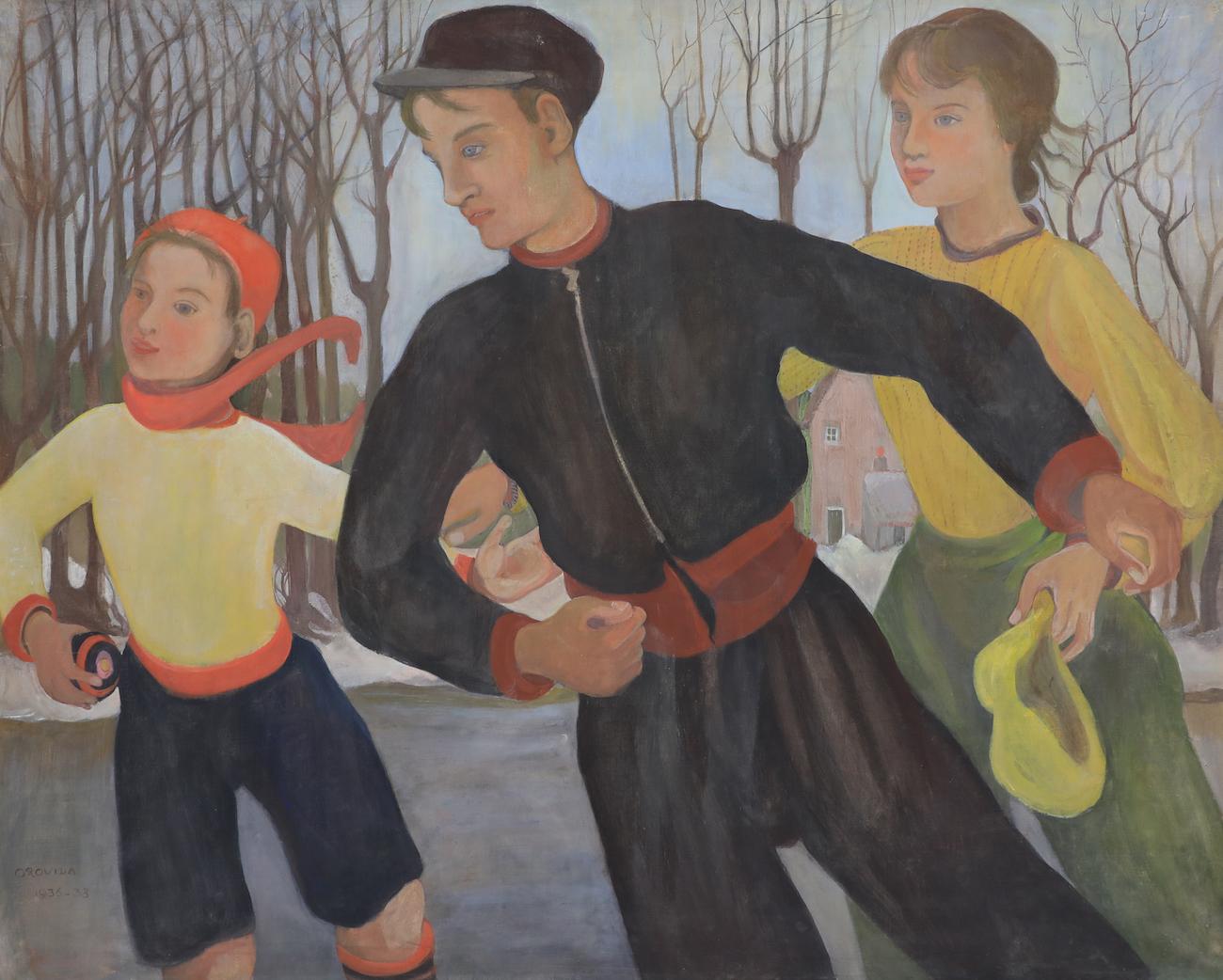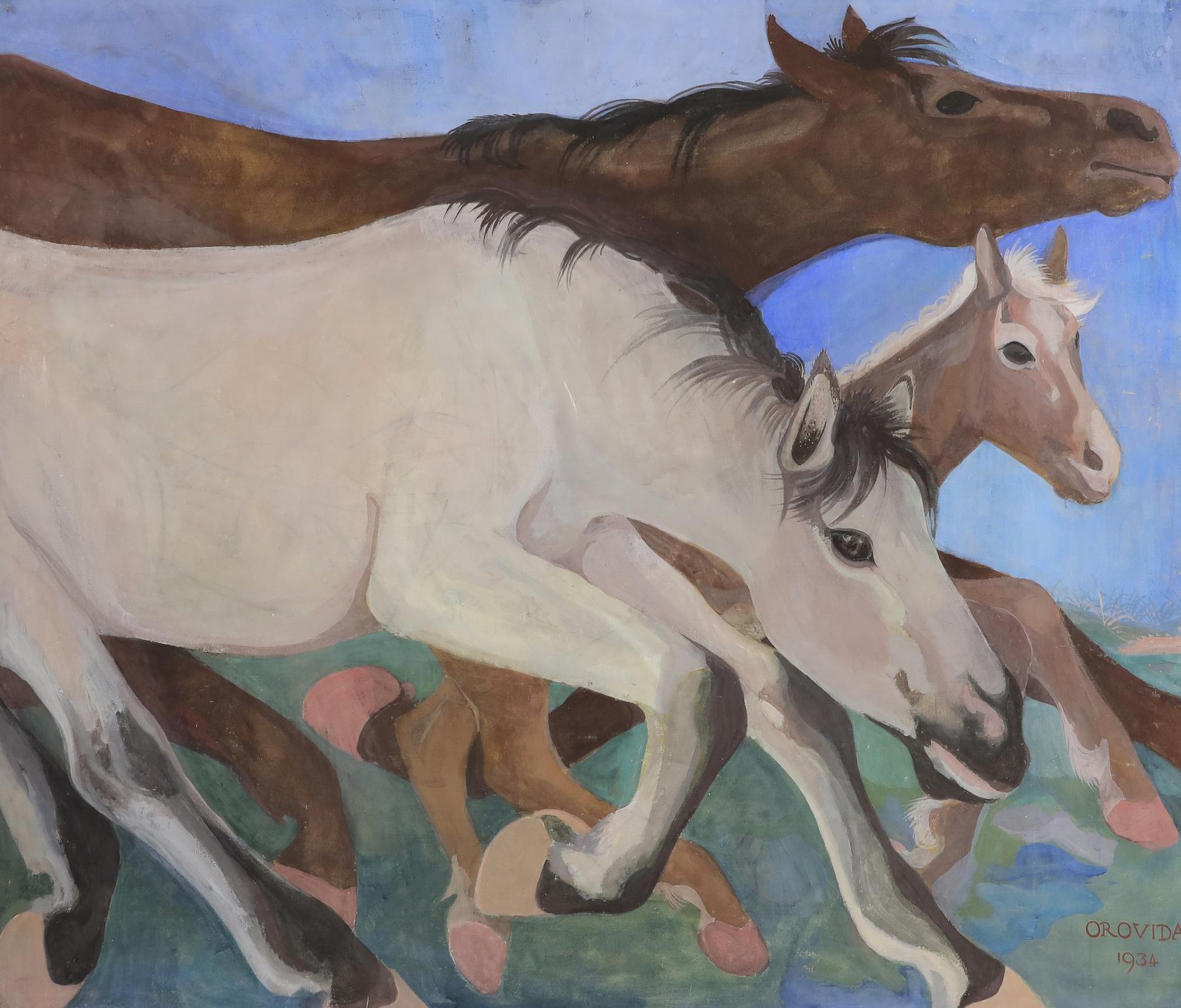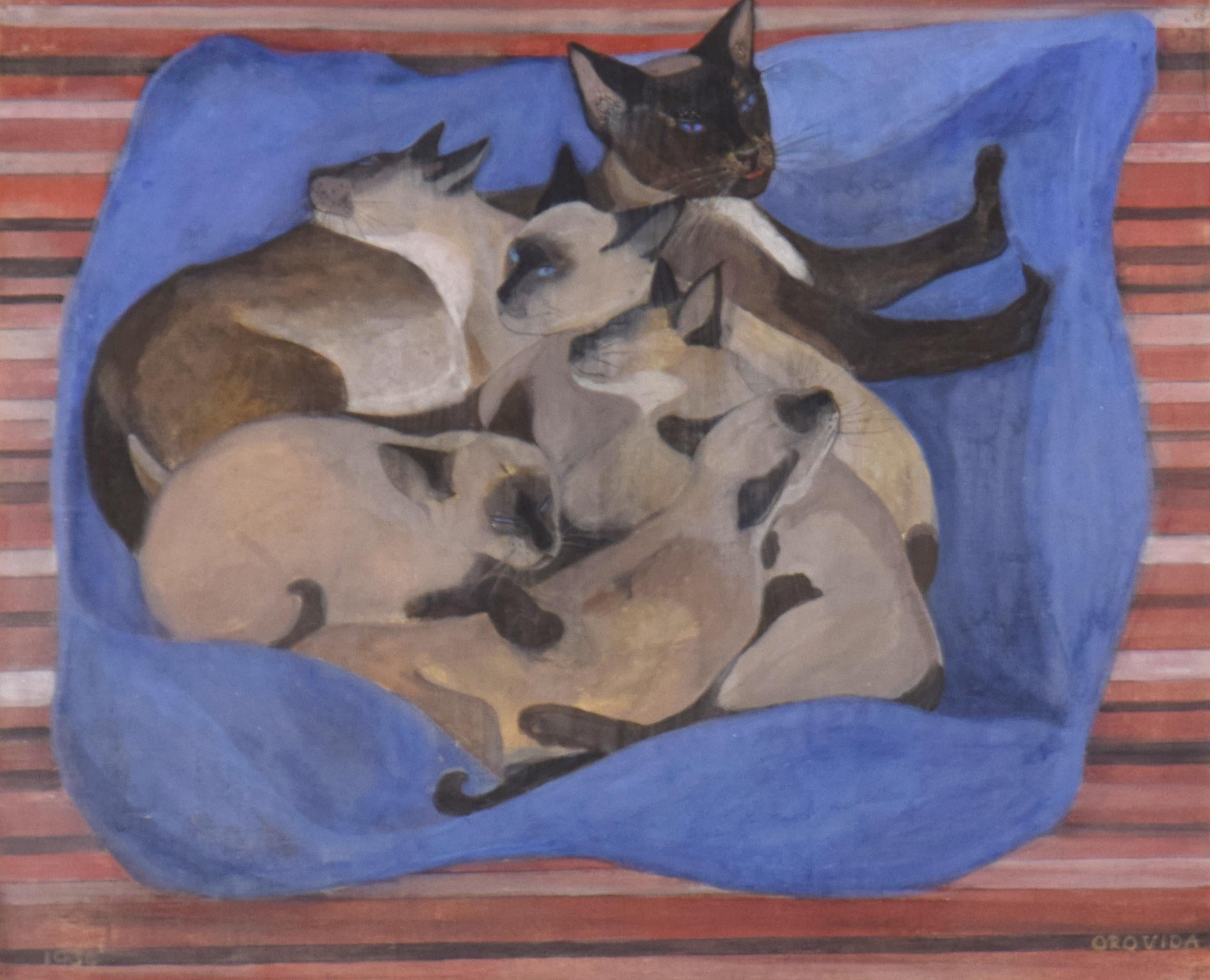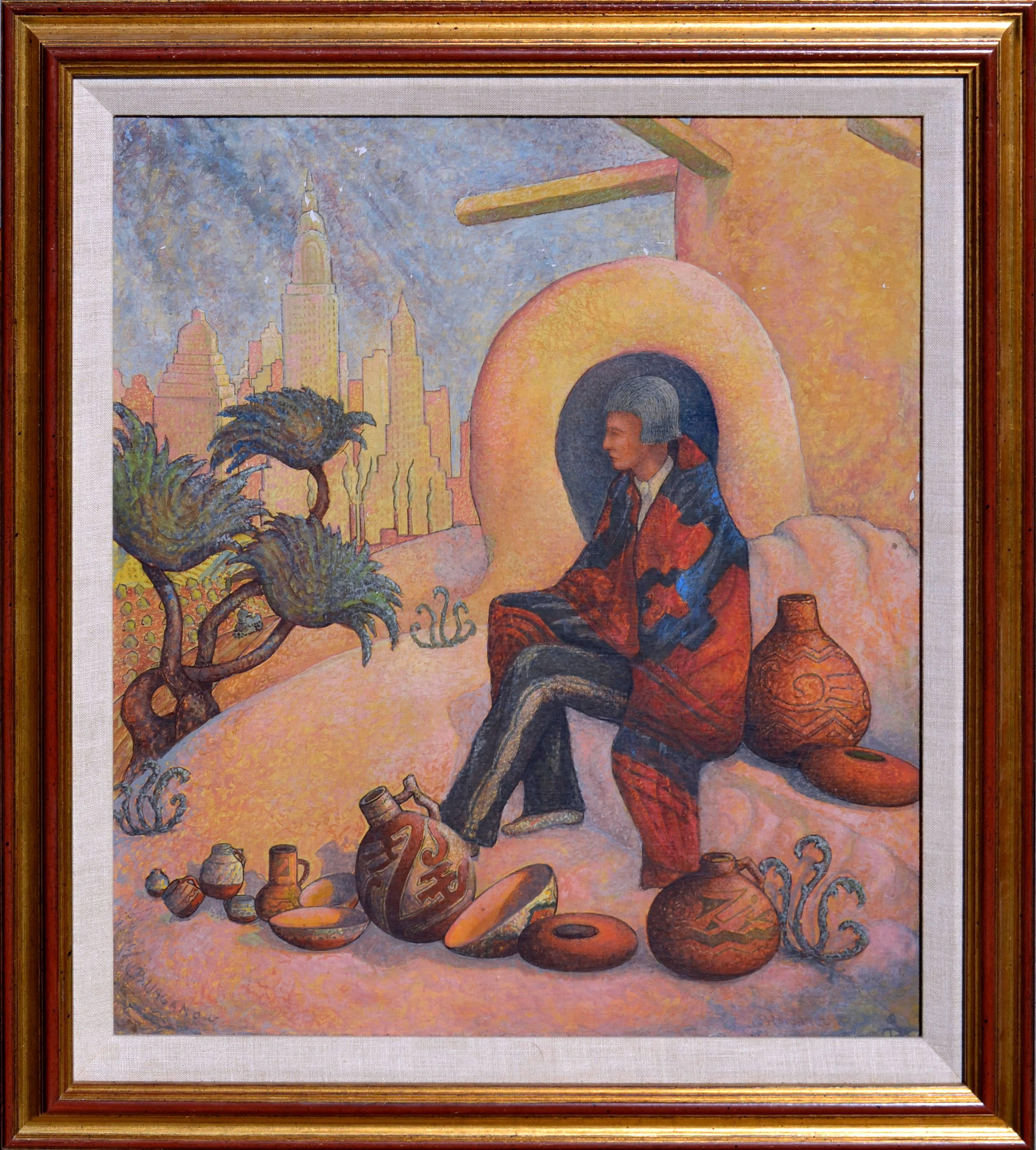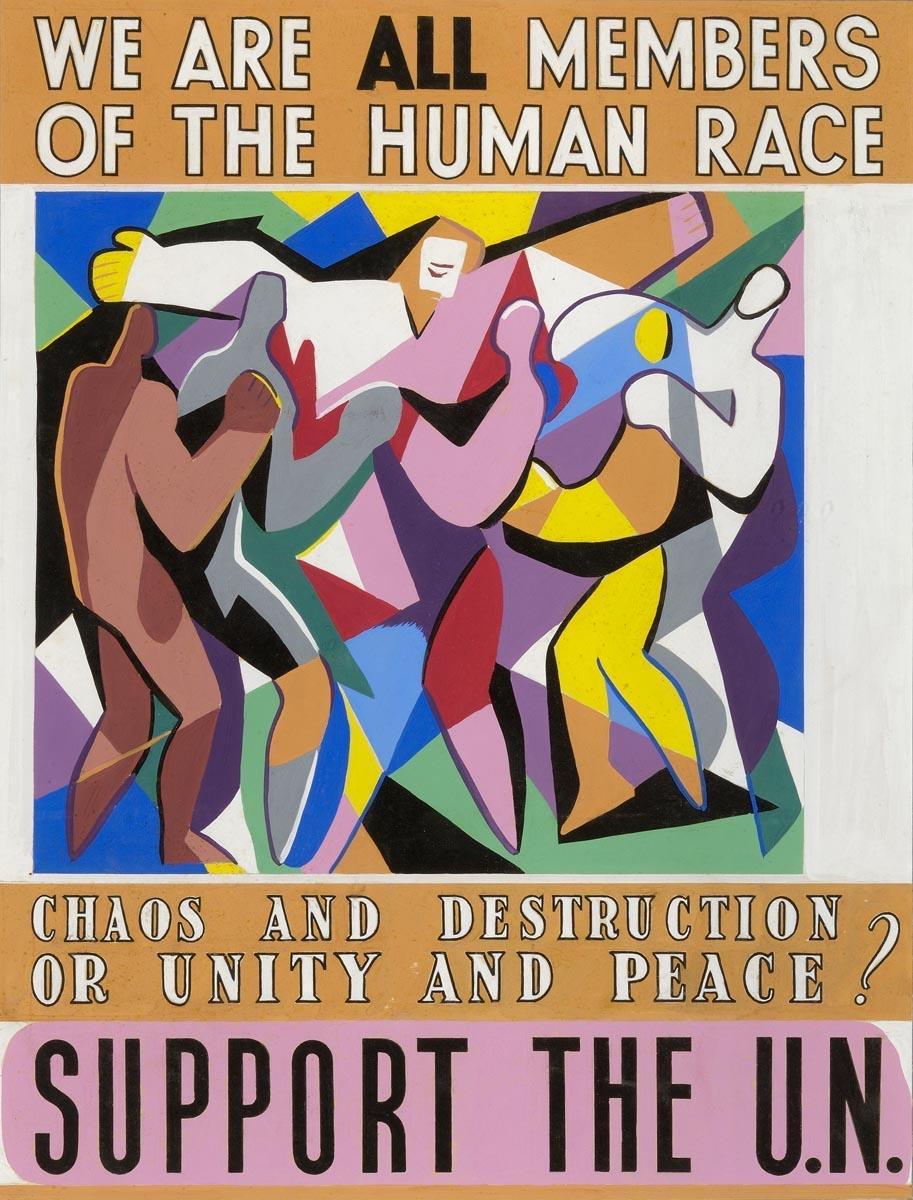Orovida PissarroBonfire, Jubilee Night by Orovida Pissarro - Egg tempura painting, 19361936
1936
About the Item
- Creator:Orovida Pissarro (1893 - 1968)
- Creation Year:1936
- Dimensions:Height: 33.86 in (86 cm)Width: 43.71 in (111 cm)
- Medium:
- Movement & Style:
- Period:
- Condition:
- Gallery Location:London, GB
- Reference Number:1stDibs: LU261213476162
Orovida Pissarro
Orovida Pissarro, the only child of Lucien and Esther Pissarro, was the first woman in the Pissarro family to become a professional artist and the first Pissarro of her generation to take up painting. Born in Epping, England, in 1893, she lived and worked predominantly in London, where she was a prominent member of several British arts clubs and societies.
Orovida first learned to paint in the Impressionist style from her father and, after a brief period of formal study with Walter Sickert in 1913, she renounced formal art schooling.
Throughout her career, Orovida always remained outside mainstream British art movements. Much to Lucien's disappointment, she soon turned away from naturalistic painting and developed an unusual style that combined elements of Japanese, Chinese, Persian and Indian art. Her rejection of Impressionism, which, for the Pissarro family, was a way of life, and her simultaneous decision to drop her famous last name and use simply Orovida as a nom de peintre, reflected a desire for independence and distance from the family legacy, of which she nevertheless remained proud.
Orovida's most distinctive works are her paintings from the 1920s and 1930s in gouache (she called her mixture body color) and tempera, applied in thin, delicate washes to silk, linen, paper or gold leaf and embellished with brocade borders. These elegant and richly decorative works generally depict non-Western subjects, for example: Mongolian horseback riders, African dancers and Persian princes, often engaged in activities such as dancing or hunting rituals.
The second half of Orovida's painting career is marked by a dramatic change in both style and subject matter. In the mid-1940s, she began to embrace contemporary subjects from everyday life and returned to a more naturalistic style. Her new style was more suited to oils, and thus, she returned to that medium.
Over the course of her life, Orovida was aware of the mixed blessing of having famous artists in the family; not only a grandfather and father but also four uncles, and towards the end of her life, she was instrumental in developing the Pissarro family archive that her mother had established at the Ashmolean Museum in Oxford.
(Biography provided by Stern Pissarro Gallery)
- ShippingRetrieving quote...Ships From: London, United Kingdom
- Return PolicyA return for this item may be initiated within 7 days of delivery.
- Winter (The Skaters) by Orovida Camille Pissarro - Winter scene paintingBy Orovida PissarroLocated in London, GB*UK BUYERS WILL PAY AN ADDITIONAL 20% VAT ON TOP OF THE ABOVE PRICE Winter (The Skaters) by Orovida Camille Pissarro (1893-1968) Egg tempera ...Category
1930s Modern Figurative Paintings
MaterialsLinen, Egg Tempera
- Migration (The Horses) by Orovida Pissarro - Painting of running horsesBy Orovida PissarroLocated in London, GB*UK BUYERS WILL PAY AN ADDITIONAL 20% VAT ON TOP OF THE ABOVE PRICE Migration (The Horses) by Orovida Pissarro (1893-1968) Egg tempera on linen laid on board 76 x 101 cm (29 ⅞ x 39 ...Category
1930s Modern Animal Paintings
MaterialsLinen, Egg Tempera, Board
- Siamese Cat with Kittens by Orovida Pissarro - Egg tempura paintingBy Orovida PissarroLocated in London, GBSiamese Cat with Kittens by Orovida Pissarro (1893-1968) Egg tempera on linen 39 x 48 cm (15³/₈ x 18⁷/₈ inches) Signed lower right Orovida and dated lower left 1934 Provenance J Ankri, 8th October 1967 Literature K L Erickson, Orovida Pissarro: Painter and Print-Maker with A Catalogue Raisonné of Paintings, (doctoral thesis), Oxford, 1992, Appendices, no. 51, p. 56 (illustrated) Exhibition London, The Leicester Galleries, Paintings by Orovida, February 1935, no. 6 Women’s International Art Club, 20th February - 13th March 1937, no. 273 London, Redfern Gallery, Ten Years of Work by Orovida, 5th-28th May 1938, no. 7 London, The Royal Society of British Artists, Summer Exhibition, 1947, no. 281 (possibly the etching) London, O’Hana Gallery, Paintings, Drawings and Coloured Etchings: Orovida, 3rd-18th October 1957, no. 13 Artist biography Orovida Camille Pissarro, Lucien and Esther Pissarro’s only child, was the first woman in the Pissarro family as well as the first of her generation to become an artist. Born in Epping, England in 1893, she lived and worked predominantly in London where she became a prominent member of several British arts clubs and societies. She first learned to paint in the Impressionist style of her father, but after a brief period of formal study with Walter Sickert in 1913 she renounced formal art schooling. Throughout her career, Orovida always remained outside of any mainstream British art movements. Much to Lucien's disappointment she soon turned away from naturalistic painting and developed her own unusual style combining elements of Japanese, Chinese, Persian and Indian art. Her rejection of Impressionism, which for the Pissarro family had become a way of life, together with the simultaneous decision to drop her famous last name and simply use Orovida as a ‘nom de peintre’, reflected a deep desire for independence and distance from the weight of the family legacy. Orovida's most distinctive and notable works were produced from the period of 1919 to 1939 using her own homemade egg tempera applied in thin, delicate washes to silk, linen or paper and sometimes embellished with brocade borders. These elegant and richly decorative works generally depict Eastern, Asian and African subjects, such as Mongolian horse...Category
1930s Modern Animal Paintings
MaterialsLinen, Egg Tempera
- Animal painting by Orovida Camille Pissarro titled 'Exercising Ponies'By Orovida PissarroLocated in London, GB*UK BUYERS WILL PAY AN ADDITIONAL 20% VAT ON TOP OF THE ABOVE PRICE Exercising Ponies by Orovida Camille Pissarro (1893-1968) Oil on board 101.5 x 76 cm (40 x 30 inches) Signed and dated lower right Orovida 1954 Provenance Estate of Orovida Pissarro With John Bensusan-Butt, cousin of the artist Sotheby's London, 12th October 1988 G Hassell, 25th November 1988 With John Noott, 10th June 1992 Literature K L Erickson, Orovida Pissarro: Painter and Print-Maker with A Catalogue Raisonné of Paintings, (doctoral thesis), Oxford, 1992, Appendices, no. 161 (illustrated) Exhibitions London, Bowmore Gallery, Women in Art 1850-1989, 2nd-11th November 1989 Fort Lauderdale, Museum of Art, Camille Pissarro and his Descendants, January-April 2000, no.123 This work was included in the above important museum exhibition and a catalogue of the Fort Lauderdale museum show will be included with this painting. Biography Orovida Camille Pissarro, the only child of Lucien and Esther Pissarro, was the first woman in the Pissarro family to become a professional artist and the first Pissarro of her generation to take up painting. Born in Epping, England, in 1893, she lived and worked predominantly in London, where she was a prominent member of several British arts clubs and societies. She first learned to paint in the Impressionist style from her father and, after a brief period of formal study with Walter Sickert in 1913, she renounced formal art schooling. Throughout her career, Orovida always remained outside mainstream British art movements. Much to Lucien's disappointment, she soon turned away from naturalistic painting and developed an unusual style that combined elements of Japanese, Chinese, Persian and Indian art. Her rejection of Impressionism, which, for the Pissarro family, was a way of life, and her simultaneous decision to drop her famous last name and use simply Orovida as a nom de peintre, reflected a desire for independence and distance from the family legacy, of which she nevertheless remained proud. Orovida's most distinctive works are her paintings from the 1920s...Category
1950s Modern Animal Paintings
MaterialsOil, Canvas
- The Fortune Teller by Orovida Pissarro - Oil paintingBy Orovida PissarroLocated in London, GB*UK BUYERS WILL PAY AN ADDITIONAL 20% VAT ON TOP OF THE ABOVE PRICE The Fortune Teller by Orovida Pissarro (1893-1968) Oil on canvas 60 x 73 cm (23 ⁵/₈ x 28 ³/₄ inches) Signed and d...Category
1950s Modern Figurative Paintings
MaterialsCanvas, Oil
- Tiger Surprises Black Buck by Orovida Pissarro - Animal paintingBy Orovida PissarroLocated in London, GB*UK BUYERS WILL PAY AN ADDITIONAL 20% VAT ON TOP OF THE ABOVE PRICE Tiger Surprises Black Buck by Orovida Pissarro (1893-1968) Oil on canvas 127 x 101.5 cm (50 x 40 inches) Signed and dated lower left Orovida 1960 Provenance The Leicester Galleries, London, circa 1965 Literature K L Erickson, Orovida Pissarro: Painter and Print-Maker with A Catalogue Raisonné of Paintings, (doctoral thesis), Oxford, 1992, Appendices, no. 195 (illustrated) Exhibition London, Royal Society of British Artists, 3rd-25th November 1960, no. 82 (possibly; titled Tiger Entangled) London, Royal Academy, 1961, no. 534 Colchester, The Minories, 3rd- 24th March 1962 London, The Leicester Galleries, 1965, no. 37 Artist biography Orovida Camille Pissarro, Lucien and Esther Pissarro’s only child, was the first woman in the Pissarro family as well as the first of her generation to become an artist. Born in Epping, England in 1893, she lived and worked predominantly in London where she became a prominent member of several British arts clubs and societies. She first learned to paint in the Impressionist style of her father, but after a brief period of formal study with Walter Sickert in 1913 she renounced formal art schooling. Throughout her career, Orovida always remained outside of any mainstream British art movements. Much to Lucien's disappointment she soon turned away from naturalistic painting and developed her own unusual style combining elements of Japanese, Chinese, Persian and Indian art. Her rejection of Impressionism, which for the Pissarro family had become a way of life, together with the simultaneous decision to drop her famous last name and simply use Orovida as a ‘nom de peintre’, reflected a deep desire for independence and distance from the weight of the family legacy. Orovida's most distinctive and notable works were produced from the period of 1919 to 1939 using her own homemade egg tempera applied in thin, delicate washes to silk, linen or paper and sometimes embellished with brocade borders. These elegant and richly decorative works generally depict Eastern, Asian and African subjects, such as Mongolian horse...Category
1960s Modern Animal Paintings
MaterialsCanvas, Oil
- Once The Master - Mid Century Figurative LandscapeBy Benjamin G. VaganovLocated in Soquel, CAOnce The Master - Mid Century Figurative Landscape "Once the Master" a portrait of a Zuni Master Potter in contrast with the emergent modernism around him. He is beneath an adobe an...Category
1950s American Impressionist Figurative Paintings
MaterialsLinen, Egg Tempera, Cardboard
- UN Poster Design American Scene Mid 20th Century Modernism WPA World PeaceBy Jo CainLocated in New York, NYUN Poster Design American Scene Mid 20th Century Modernism WPA World Peace Jo Cain (1904 – 2003) We Are All Members of the Human Race: UN Poster Proposal 21 x...Category
1940s American Modern Figurative Paintings
MaterialsEgg Tempera, Board
- ParadeBy Catherine KoenigLocated in Buffalo, NYAn original egg tempera painting by American female artist Catherine Koenig.Category
1950s Modern Figurative Paintings
MaterialsBoard, Egg Tempera
- Tending the GardenBy Robert Elton TindallLocated in Missouri, MORobert Elton Tindall (1913-1983) "Tending the Garden" (Girl with a Hoe) c. 1940 Egg Tempera with Resin Oil Glazes on Panel Signed Lower Left Site: 10 x 9 inches Framed: 15 x 14 inch...Category
Mid-20th Century American Modern Figurative Paintings
MaterialsEgg Tempera, Wood Panel
- The Rest, Egg Tempera, 20th Century English PaintingBy Francis PlummerLocated in London, GBEgg Tempera on board, signed Image size: 19 x 15 inches (48 x 38 cm) Gilt frame Plummer specialised in the medium of egg tempera, a technique little used since the frescos of the Re...Category
20th Century Modern Figurative Paintings
MaterialsEgg Tempera
- Myth III - British 1936 Modern art tempera painting Ida Graves poet familyBy Blair Hughes-StantonLocated in London, GBThis superb British 1930's modern art tempera painting is by noted interwar artist Blair Hughes-Stanton. Painted in 1936 it is part of the myth se...Category
1930s Modern Figurative Paintings
MaterialsEgg Tempera
